- THE LEGO® LEARNING SYSTEM
- EARLY LEARNING
- FEATURED PRODUCTS
- FIND A DISTRIBUTOR
- ALL RESOURCES
- GETTING STARTED
- LESSON PLANS
- RESOURCES BY SOLUTION
Can a land yacht sail into the wind? Investigate how invisible forces can change an object's motion and how this force acts from a distance.

- Review the online pupil material. Use a projector to share this material with your pupils during the lesson.
- Make sure that you have covered Newton’s three laws of motion in an earlier lesson.
- Consider the abilities and backgrounds of all your pupils. Differentiate the lesson to make it accessible to everyone. See the Differentiation section below for suggestions.
- Set up the fans on the floor, allowing at least 3 metres in front of each, so that the land yachts have room to move. Use a strip of tape to mark a start position in front of each fan (perpendicular to the fan) .

( Whole Class, 5 Minutes )
- Watch the pupil video here or access it via the online pupil material.
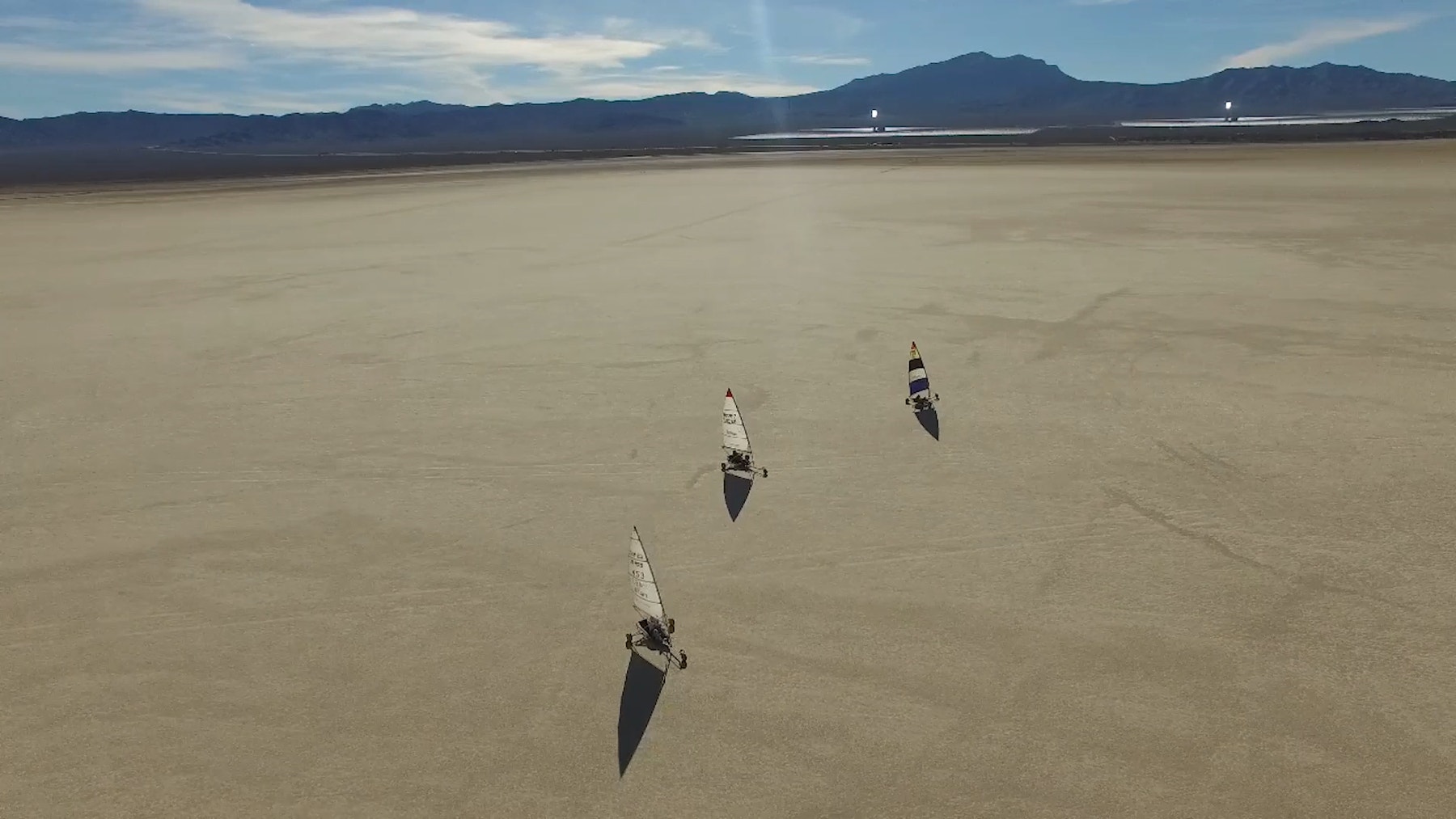
- Facilitate a quick discussion about which force makes a land yacht move.
- Which forces did you see in action when you were watching the sailboat and kite in the video? (pull/push)
- Which force made the sailboat move? (It was the push force of the wind.)
- In what situations does a sailboat not work? (If the wind is blowing straight towards the sailboat, the boat cannot sail directly forwards into the wind.)
- Tell the pupils that they are going to build a land yacht and investigate how wind force can change its motion.
( Small Groups, 30 Minutes )
- Ask the pupils to work in pairs to build the Land Yacht model. Tell them to take turns, one partner searching for the bricks while the other builds, switching roles after each step has been done.
- You can find building help in the Tips section below.
- Direct the pupils to the three experiments that are found in the pupil material for this lesson. Distribute the Student Worksheets (Teacher Support – Additional Resources).
Experiment 1: Downwind
- Ask the pupils to set their land yachts on the start line, facing away from the fans.
- Tell them to switch the fans on and to let their land yachts blow downwind (straight away from the fans) and to observe their movement. The sail angle can be adjusted by turning the small gear to optimise the land yacht's movement. The red bushings can also be moved to change the shape of the sail.
- Challenge your pupils to find the best sail angle and shape for making the land yacht travel the farthest distance.
- Have them record the best angle and shape on their Student Worksheets.
Experiment 2: Crosswind
- Ask the pupils to set their land yachts on the start line at a right angle, 90 degrees perpendicular to the fan.
- Have them switch the fans on to see if their land yachts move to the side of the fan. (They will have to adjust the angle of the sail again to optimise the land yacht's movement.)
- Challenge your pupils to find the best sail angle, and then record it on their worksheets.
Experiment 3: Into the Wind
- Have the pupils turn their land yachts slightly off the start line and towards the fan to see which sail angle can make the land yacht drive ‘upwind’ towards the direction the wind is coming from. They can use the angle measurement tool from their sets to measure the upwind angle of the land yacht from the line. With the right adjustments, the pupils will be able to make their land yachts move upwind but not directly into the wind.
- Gather your pupils together to review and discuss their experiments.
- Which angle was best for each experiment?
- What were the limits? (Too much wind at the wrong angle can make the land yacht tip over. That is why sailboats ‘reef’ their sails to reduce the surface area of the sail, so that the boat does not blow over and capsize) .
- Why can’t the land yacht go more than 45 degrees upwind (towards the fan) ? (The sum of the force vectors acting on the vehicle pushes it downwind.)
- If time permits, explain the forces that are at work (force vectors) in detail.
- Allow time for the pupils to disassemble their models, sort the bricks back into the trays and tidy up their workstations.
( Ongoing Throughout the Lesson )
- Give feedback on each pupil's performance.
- Facilitate self-assessment.
- To simplify the process, you can use the assessment rubrics that have been provided.
Observation Checklist
- Measure your pupils’ proficiency in describing how different forces can change an object's motion.
- Requires additional support
- Can work independently
- Can teach others
Self-Assessment
- Green: With some help, I can describe how an invisible force can change an object's motion.
- Blue: I know I can describe how an invisible force can change an object's motion.
- Purple: I can describe and explain how an invisible force can change an object's motion.
Peer Feedback
- Using the brick scale above to score each other's performance
- Presenting their ideas and giving constructive feedback
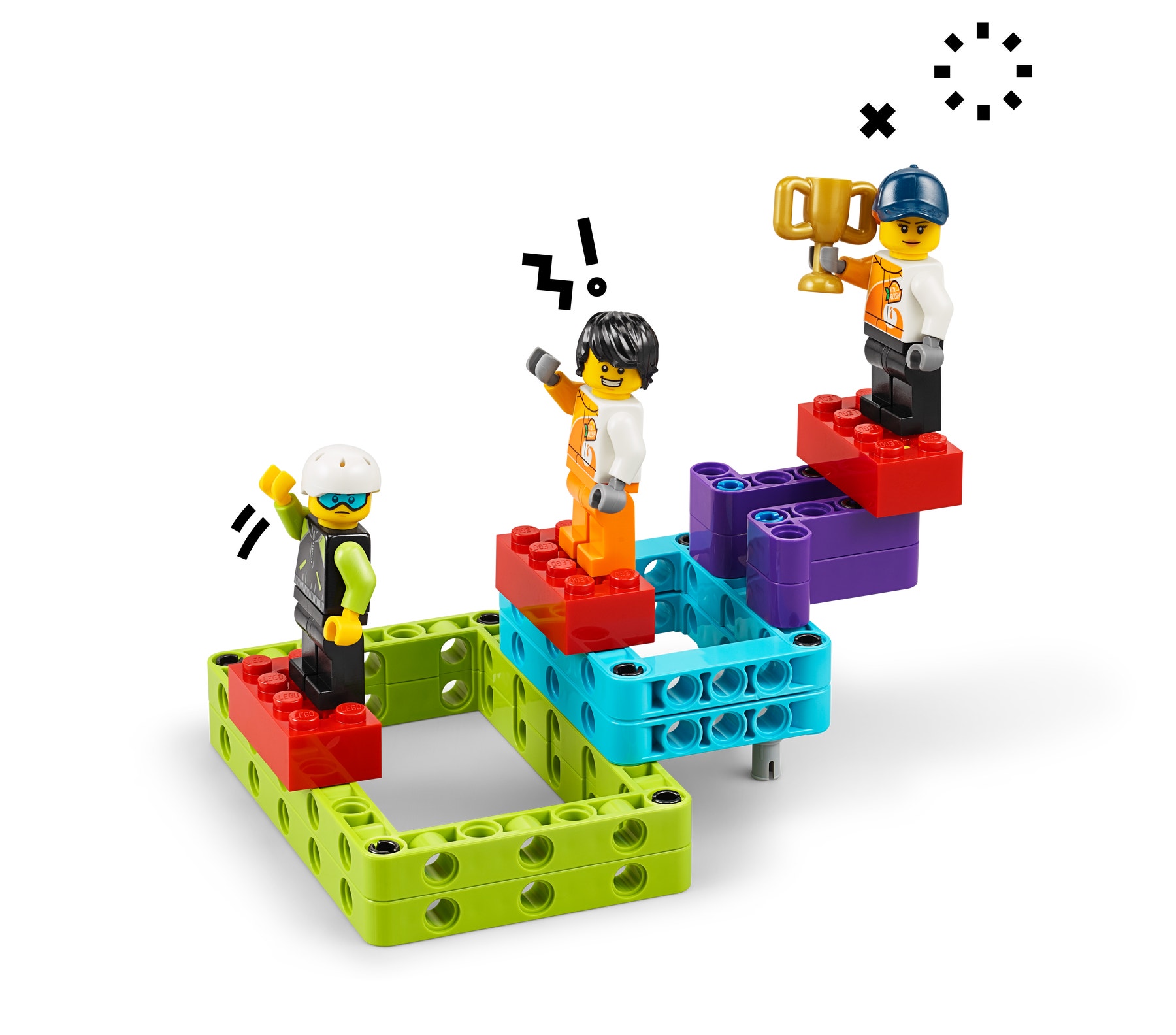
- Have the groups start testing as soon as they have finished building. They should take turns as they adjust the sails to ensure that everyone has a chance to try out their models.
- Choose ONE fan speed setting for all the tests. Any speed will do.
- If your fan is too big or too powerful, try moving it farther back from the start line. You could also use a piece of furniture to block some of the fan's airflow.
- If your fan is too small, move it closer to the models or try moving the fan by hand, following the models.
Differentiation
Simplify this lesson by:
- Having your pupils set the sail at 90 degrees for each of the tests
Increase the difficulty by:
- Encouraging the pupils to adjust the shape of the triangular sail
- Challenging your pupils to figure out how to make the land yacht move upwind

(Note: This will require additional time.) To incorporate the development of maths skills, have the pupils let their land yachts go at a 60-degree angle from the start line and measure how far they travel by counting how many revolutions the rear wheels made before stopping. They can use the angle and distance travelled to calculate the area of the triangle that was created.
Rear wheel diameter = 43.2 mm
- Circumference of the wheel = (π x D = C)
ACMMG197 Investigate the relationship between features of circles such as circumference, area, radius and diameter. Use formulas to solve problems involving circumference and area
Teacher Support
The pupils will:
- Understand how wind force acting from a distance can change an object’s motion
- Explore the relationship between energy and forces
- LEGO ® Education BricQ Motion Prime Sets (one for every two pupils)
- Masking tape
- Medium-sized tabletop electric fans (ideally, one for every ten pupils)
National Curriculum Sc5/1.1 Planning different types of scientific enquiries to answer questions, including recognising and controlling variables where necessary
Sc5/1.2 Taking measurements, using a range of scientific equipment, with increasing accuracy and precision
Sc5/1.5 Reporting and presenting findings from enquiries, including conclusions, causal relationships and explanations of results, in oral and written forms such as displays and other presentations
Sc5/4.2a Explain that unsupported objects fall towards the Earth because of the force of gravity acting between the Earth and the falling object
Sc5/4.2b Identify the effects of air resistance, water resistance and friction, that act between moving surfaces
Ma6/3.1a Solve problems involving the calculation and conversion of units of measure, using decimal notation up to 2 decimal places where appropriate
Ma6/3.2c Compare and classify geometric shapes based on their properties and sizes and find unknown angles in any triangles, quadrilaterals, and regular polygons
Ma6/3.2e Recognise angles where they meet at a point, are on a straight line, or are vertically opposite, and find missing angles
Pupil Material
Student worksheet.
Download to view and share the student worksheet.

Share with:

Brickipedia
Join the official Brickipedia Discord server! A great place to chat with fellow LEGO fans!

- Space Shuttle Endeavour Sets
- View history
Land Yacht is a Space Shuttle Endeavour Set released in 2011 . It is manily all blue. It was one of fourteen LEGO sets launched into space aboard the Space Shuttle Endeavour.
External links [ ]
- Smashing Bricks
- 1 List of themes
- 2 Minifigures (theme)
- 3 Speed Champions

LEGO Education Land Yacht
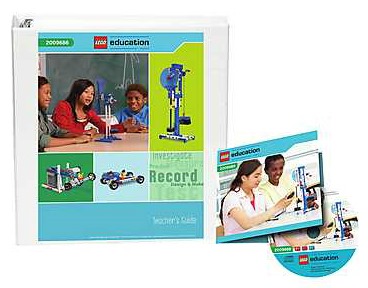
Hi everyone, it’s been a bit since I’ve shared what our boys LEGO Education co-op is doing, so I thought I’d give you all an update.
This week’s assignment was to create a “land yacht” using the gear skills they’ve learned mixed with some of the wind mill creations they’ve made recently to create a wind powered vehicle that can cross on land.
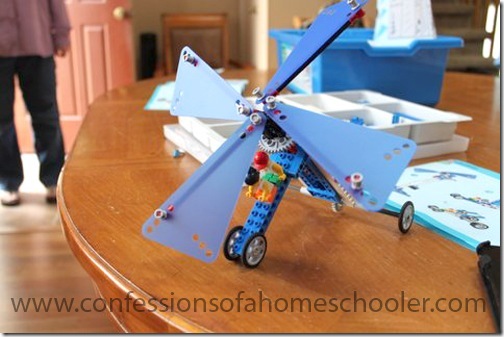
With this assignment the boys created a few variations of propellers and then discussed which worked out the best and why.
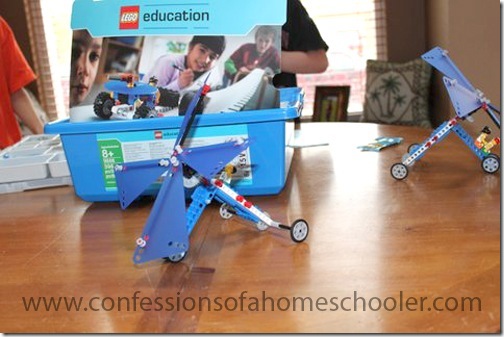
there were a couple of boys missing so Strawberry Shortcake and Tinker Bell were able to fill in for them. They had a great time and enjoyed participating.
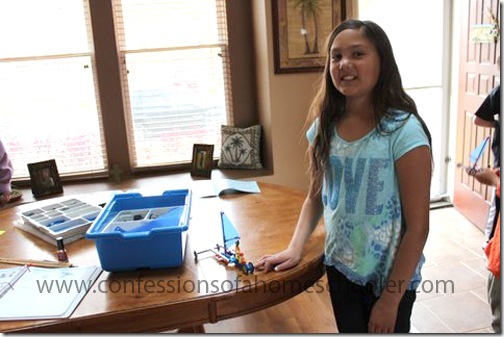
Here is a close up of Strawberry Shortcake’s machine…she had a sail type wind powered car.
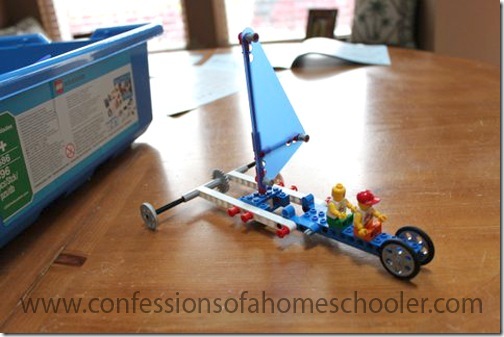
tinker Bell was the “wind source” for the group that day. Each one got to run their machine using a hair dryer to create some wind. They all discussed which ones went farthest, fastest, and smoothest and why.
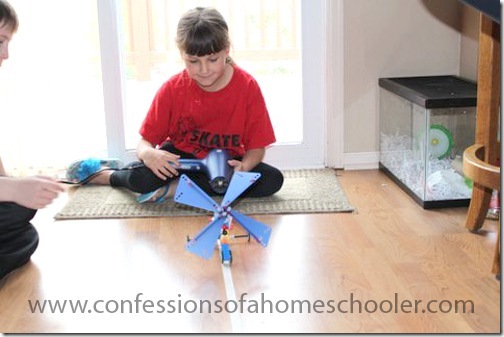
I’ll share more of their group as we go. So far they’ve had a great time participating in this group and as a mama, I absolutely love the critical thinking skills and concepts taught in the LEGO Education products! I couldn’t recommend these more!
Want more information on LEGO Education ? Click any of the links below! They have products for all different grade and skill levels!
- LEGO Education Facebook
- LEGO Education Twitter
- LEGO Education on Pinterest
- LEGO Education on Instagram
- LEGO Education YouTube Channel
- LEGO Education Blog
We’re using the Simple and Motorized Mechanisms Base Set with our boys LEGO co-op group. You can use the kit alone, or purchase the Simple & Motorized Mechanisms Activity Pack separately which has all of the lesson plans written out for you. It’s literally a whole curriculum if you’d like to make this program into a more formal unit which we will do for next year. Here is how LEGO Education describes this kit:
“Using the activity pack, students will investigate the principles of simple machines, mechanisms, and structures; experiment with balanced and unbalanced forces and friction; measure distance, time, speed, and weight; and much more. The activity pack comes in a three-ring binder and provides 30 lessons featuring 37 principle model activities; 14 main activities, each with extension activities; and six problem-solving activities. Also included is a CD-ROM with teacher’s notes, student worksheets, and glossary.”
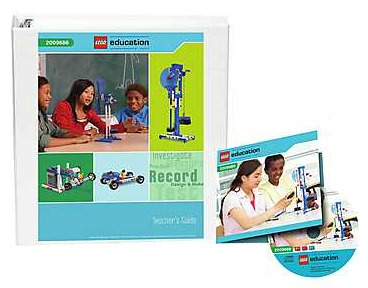
Disclosure: I received this product free for review on my website. The opinions expressed in this post are my own and were not influenced by the free product provided. We absolutely LOVE LEGO Education and can’t say enough about how cool this program is!
Hi Erica, What age did you start the Lego education? I have an upcoming first grader who I think would love it, but not sure if he is too young. Thanks!
First grade would be fine! As long as their pretty good at following LEGO instructions they’ll do great.
I am wondering about the Lego education co-op that your kids are a part of. You mentioned the set that you use The simple and motorized mechanisms base set and I am wondering if that is what each child needed or if the the whole group used the one set?
Hi Rebecca, the sets are meant to be used with a pair of students so 2 students to 1 set. You obviously only need 1 teacher’s manual/activity pack. But the box of actual LEGO pieces come with two books for each activity. Each student builds their half of the project, then they bring their individual projects together to create the final project.
I really enjoy your blog:) How did you find a lego co-op?
I would love to know more about this co-op. How did you start it or find it? How does it work? Does your family do any other co-ops? I think we actually go to the same church and I am homeschooling my son this year. I would love some resources on co-ops in the area to supplement our learning and work on our social skills.
Hi Sarah, I have a friend who started the group and I supplied the LEGO materials because they sent it to me for review for our group. But you can start up your own. We just meet once a month with about 6 boys. We’ve met for a few years and before using the LEGO Education materials we just did a theme. So everyone brought a creation to go with our theme for the month. They also bring a loose bag of LEGOs with them. Then after presenting their themed item, we have a 5 minute challenge where we give them something specific and they have 5 min. to create it, then they present that.
We do a weekly co-op as well.
Leave a Reply Cancel reply
Your email address will not be published. Required fields are marked *
Save my name, email, and site URL in my browser for next time I post a comment.
This site uses Akismet to reduce spam. Learn how your comment data is processed .
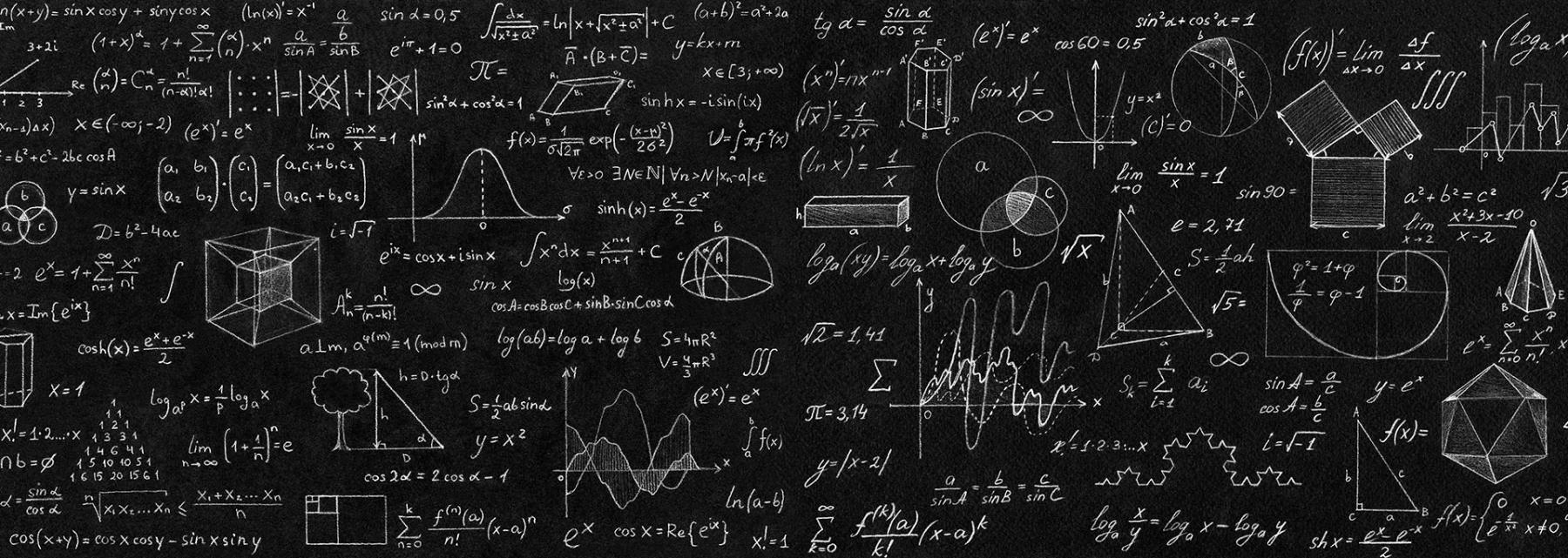
Exploring Newton's 3rd Law with LEGO Land Yachts
Students will use 2-3 days to build a land yacht with Lego BricQ, test different winds and angles, and then use their lab to introduce Newton's third law of motion.
Lesson Grade Level
Lesson plan link/url, subject area, related content.

IMAGES
VIDEO
COMMENTS
The wheels may skid when it is close to the fan.The energy from the wind is collected by the sails, geared down (3:1), which increases the force and turns the wheels, but in the opposite direction. When it skids – the wind force one way is equal to the friction force of the tires pushing the other way. Idea Predict and test what happens if ...
Can a land yacht sail into the wind? Investigate how invisible forces can change an object's motion and how this force acts from a distance.Check out the Les...
Experiment 1: Downwind. Ask the pupils to set their land yachts on the start line, facing away from the fans. Tell them to switch the fans on and to let their land yachts blow downwind (straight away from the fans) and to observe their movement. The sail angle can be adjusted by turning the small gear to optimise the land yacht's movement.
In this video, I give you a full tour of this giant Lego yacht that I've built. That includes the full interior and exterior. I go over everything - size, co...
Land Yacht is a Space Shuttle Endeavour Set released in 2011. It is manily all blue. It was one of fourteen LEGO sets launched into space aboard the Space Shuttle Endeavour. Smashing Bricks
Hi everyone, it’s been a bit since I’ve shared what our boys LEGO Education co-op is doing, so I thought I’d give you all an update.. This week’s assignment was to create a “land yacht” using the gear skills they’ve learned mixed with some of the wind mill creations they’ve made recently to create a wind powered vehicle that can cross on land.
1.1K views, 26 likes, 10 loves, 1 comments, 14 shares, Facebook Watch Videos from LEGO Education: It’s time to get outside and explore forces like the wind! There are invisible forces all around us...
Students will use 2-3 days to build a land yacht with Lego BricQ, test different winds and angles, and then use their lab to introduce Newton's third law of motion.